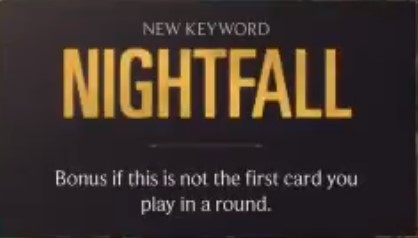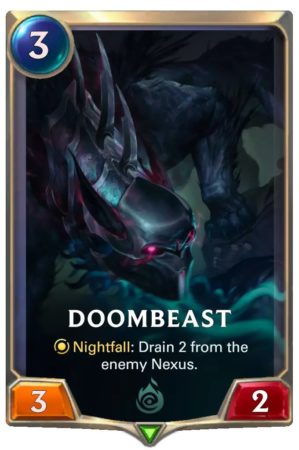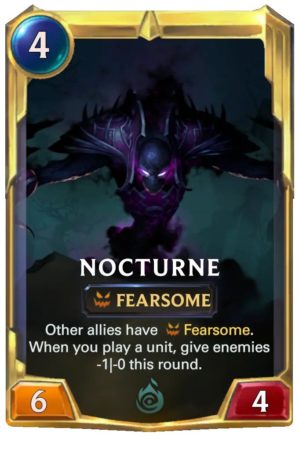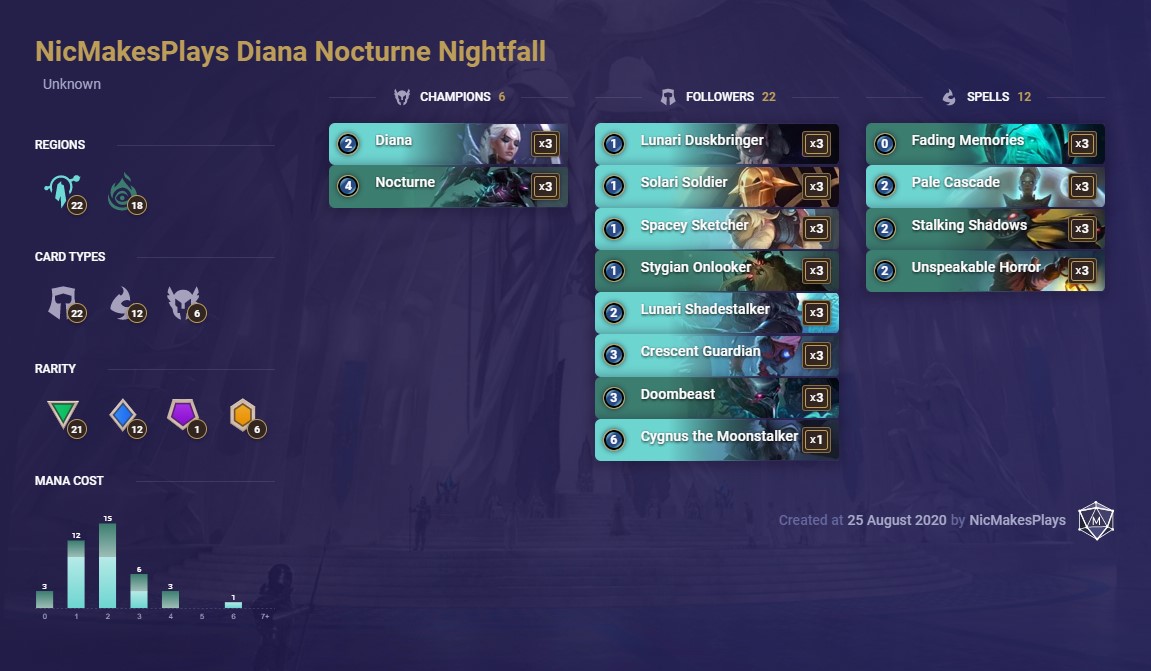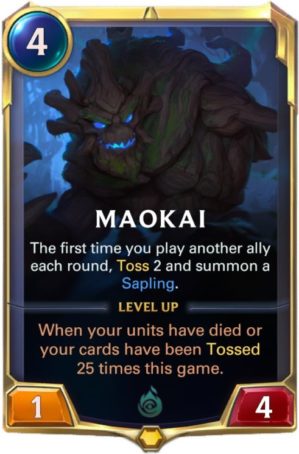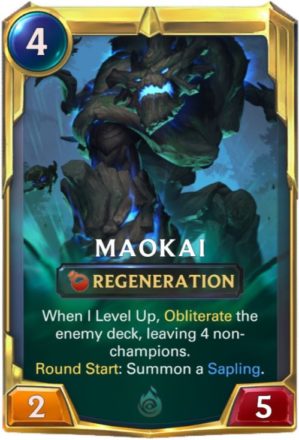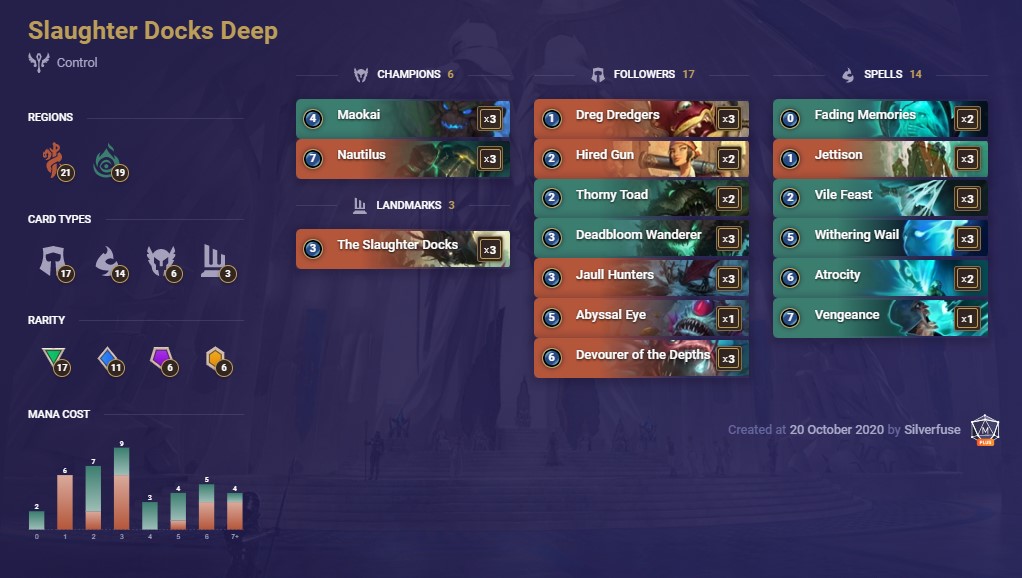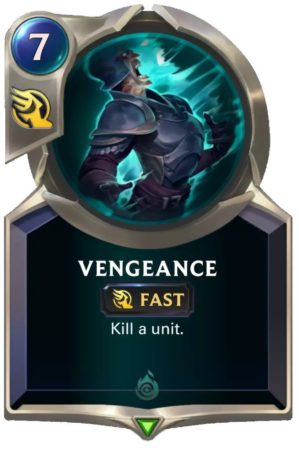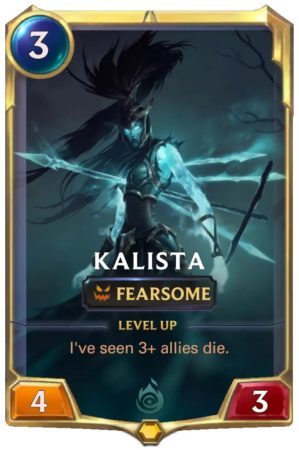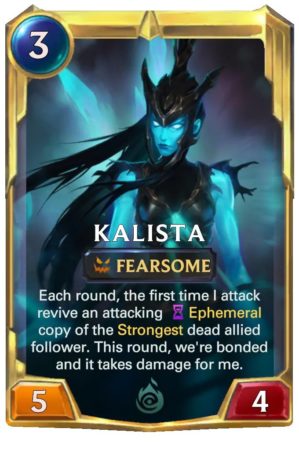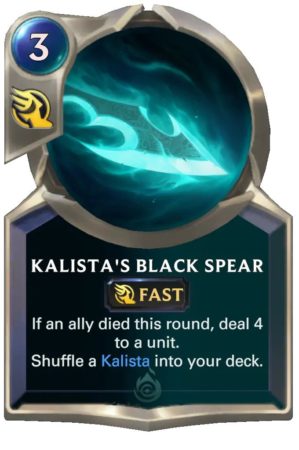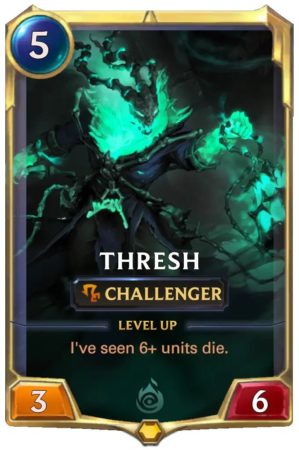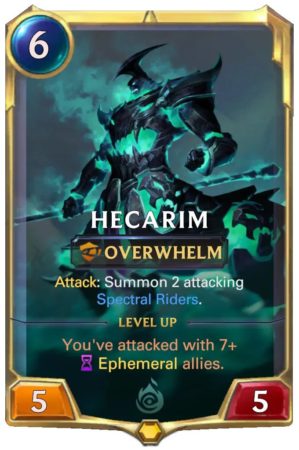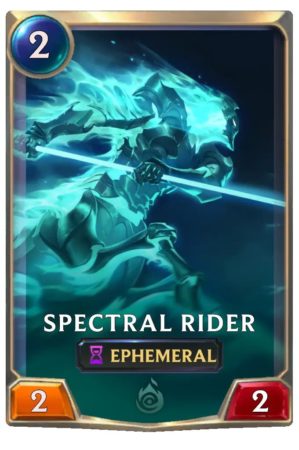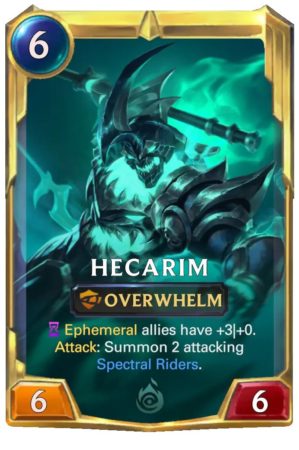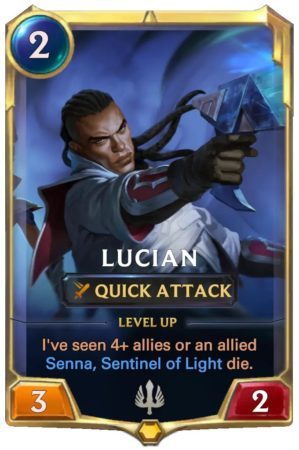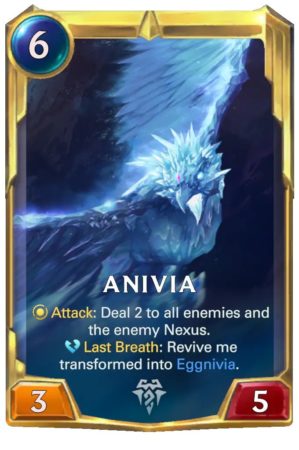Legends of Runeterra: Shadow Isles Guide
So you want to manipulate dark powers and resurrect units and spirits to do your bidding? You’ve come to the right place. In this guide, we’ll cover the champions of Shadow Isles, its signature mechanics, as well as the synergies it has with other regions.
By the end of this article, our goal is that you’ll really understand Shadow Isles as a region and be able to create your own decks with our Legends of Runeterra deck builder. Check out our other articles that explore Bilgewater, Demacia, Freljord, Ionia, Piltover & Zaun, Noxus, and Targon.
Signature Characteristics
“The land now known as the Shadow Isles was once a beautiful realm, but it was shattered by a magical cataclysm. Black Mist permanently shrouds the isles and the land itself is tainted, corrupted by malevolent sorcery. Living beings that stand upon the Shadow Isles slowly have their life-force leeched from them, which, in turn, draws the insatiable, predatory spirits of the dead. Those who perish within the Black Mist are condemned to haunt this melancholy land for eternity. Worse, the power of the Shadow Isles is waxing stronger with every passing year, allowing the shades of undeath to extend their range and reap souls all across Runeterra.”.” from Universe.
Shadow Isles Updates for the Call of the Mountain Expansion
In LoR’s second expansion, Call of the Mountain, Shadow Isles received Nocturne as its new champion along with twelve other cards.
To learn more about Nocturne and how he works, be sure to revisit our first impressions article.
This champion revolves around the new keyword mechanic, Nightfall:
Nightfall adds a new dynamic where you must not only plan which cards to play, but specifically which order to play them in order to receive additional bonuses.
For example, Doombeast when played after your first card in a round, will Drain 2 from the enemy Nexus, simultaneously burning your opponent while giving you some sustain.
Nocturne’s Nightfall effect gives him a significant tempo swing as you can weaken all enemy units by -1 Power and grant Vulnerable to an enemy to set up a favorable trade while the debuff is active.
Once he’s leveled up (after you’ve attacked with 5+ Nightfall allies), Nocturne really starts to apply pressure as all of his allies will have Fearsome. On
On top of that, every time you play a unit, enemies will have -1 Power for that round.
For a potent Nocturne deck, try him out with Targon’s Diana! This deck is incredibly aggressive and offers interesting gameplay choices due to its Nightfall theme.
Deck Code: CEBQCAIFF4DQGCJDHBEUWWCZLYCQGBICAMCAKBQAAEAQGCJP
If you’re able to properly sequence your cards and really maximize your Nightfall effects, you can overwhelm your enemies with value.
Shadow Isles Updates for the Rising Tides Expansion
The first Legends of Runeterra expansion, the Rising Tides, brought ten new cards including one champion, Maokai.
We’ve written a separate article on our Master player’s first impressions on Maokai so be sure to check that out to learn more about him.
The signature playstyle flavor of Shadow Isles has been its mechanics related to sacrificing its own units in order to gain positive benefits.
This playstyle tendency is expanding due to the addition of the new keyword from this expansion, Toss.

In most cases, Toss would seem like more of a downside than a positive effect for your deck.
However, due to Shadow Isles having Maokai as their new champion, this becomes a very powerful tool.
Maokai needs a combination of 25 allies dying and/or cards being Tossed in order to level up. Once this happens, he Obliterates all but four non-champion cards in his opponent’s deck.
This makes the sacrifice of Tossing cards worth it as your enemy has a four round clock to win or find a way to generate more cards in their deck (having zero cards causes a loss in LoR).
Many of the new Shadow Isles cards, such as Thorny Toad, Deadbloom Wanderer, and Sap Magic, help to support this new Toss archetype by increasing your odds of surviving until Maokai levels up.

Toss also synergizes very well with another new Rising Tides mechanic, Deep.

Units that have Deep automatically gain a +3|+3 buff as soon as your deck has 15 or fewer cards left.

Since Toss decreases the number of cards in your deck, this accelerates you to achieving a Deep state faster.
This synergy of Toss + Dive makes pairing Maokai with Nautilus, one of the new Bilgewater champions, an appealing choice.

Toss levels up Nautilus quickly by achieving Deep status. Once Nautilus levels up, he’ll refill your deck back up with your most powerful Tossed allies to help you close out your match.
Here’s an example decklist for this archetype created by Silverfuse:
Deck code: CECAKAQGE4WC6NJYAIAQKHJIAIBAKCAKAEBQMAIDAIAQKGJPAEBAMBIBAICQOAQBAIDCKAIBAUAQ
If you want to defeat your opponent with massive sea creatures or by milling them to death, try it out!
Mechanics and Playstyle
Strike Fear into Enemies
Shadow Isles is a land of terrors and nightmares. The creatures of Shadow Isles, such as Arachnoid Horror, can strike fear into your very soul which its the region that has the most cards with the Fearsome mechanic (only lets units of Power 3 or greater block the card).

This keyword is great for avoiding chump blockers (weak, low-cost blockers that are used to just get in your way). Shadow Isles uses constant numbers and Fearsome to create situations where it’s difficult to get good blockers in.
It’s their main mechanic for playing aggressively and pushing through damage and they have the large majority of the Fearsome cards in the game.
Manipulate Death and Resurrection
Shadow Isles grants you powers that allow you to master the cycle of death and resurrection. You’ll often have to sacrifice or set up situations for your own units to die in order to activate powerful effects that provide a bigger long term benefit.
The first mechanic that reflects this aspect of Shadow Isles is Last Breath. Last Breath is simple – triggers an effect when the unit dies (similar to Deathrattle in Hearthstone).

Shadow Isle will be looking to trigger their last breath effects as often as possible because they are usually more beneficial than the unit themselves like Cursed Keeper.
Since Cursed Keeper has the “Can’t Block” keyword (pretty self-explanatory), you’ll need to force your opponent to kill him or use another effect to kill him yourself. If you’re able to accomplish this ritual, you’ll summon the Escaped Abomination, which is a beefy 2-cost 4|4.

This is incredibly powerful if you’re able to do this in the early rounds since it will often be bigger than what your opponent can play, so your sacrifice ends up being worth it. An example of a tool for killing your own units is Glimpse Beyond, which allows you to kill an ally to draw 2 cards.

This card probably wouldn’t be that efficient if it was a part of other regions, but for Shadow Isles, it can give you value while refilling your hand with more threats and tools.
The other side of the Shadow Isles cycle is resurrection through the Revive mechanic, which allows you to summon unit that has died during a match.
Revive really lets Shadow Isles make the most out of Last Breath effects by allowing you to double and triple dip (maybe even more) by using cards like Chronicler of Ruin. This 4-cost 3|3 allows you to instantly kill an ally and revive it back to life.
By pairing Chronicler of Ruin with cards like The Undying or Cursed Keeper (which we mentioned earlier), you can really create and extend value to put your opponent in a sticky situation.

Revive also lets you work around only having one copy of a champion on the battlefield at a time. By reviving dead champions, you can summon them directly to the battlefield instead of being restricted to only playing their champion spell from hand.

If you’ve read our Freljord guide, you’ll know that this would be powerful when used on champions like Tryndamere and Anivia. We’ll discuss these interactions further in the synergies section below.
Summon Spirits
Playing Shadow Isles’ allows you to conjure and wield an endless army of dark spirits. However, many of these spirits are only available temporarily before returning back to the grave.
This theme is reflected in the Ephemeral mechanic, which causes a unit to automatically die at the end of the turn.
Unleashed Spirits are 1|1 Ephemeral units.
Ephemerals can be used to set up large burst turns. Cards like Haunted Relic may seem weak at first but when you combine them with cards like Soul Shepherd and a leveled up Hecarim (see the Shadow Isles champion section below)they start becoming a lot scarier.

With just a leveled up Hecarim and a 2 mana Haunted Relic, you can summon a full board of 6 units, threatening for a total of 24 damage. Outside of burst turns, you can also use some cards to grant the Ephemeral keyword to units with Last Breath to give them another way to die.

Drain and Destroy
As the region that revolves around death, Shadow Isles has some of the best removal options in the game. Not only do you have access to options that can instantly kill enemies, but you also have removal options with Drain such as Vile Feat, Grasp of the Undying, and Withering Wail, that allow you to keep your Nexus healthy.
Drain spells heal your Nexus for the amount of damage that they inflict. Shadow Isles has a large number of Drain cards, making them the faction that has the access to the most healing in the game.

Their healing is made very effective because they can not only remove enemy units, but can often target their own to trigger Last Breath effects.
Overall, Shadow Isles has the largest number of removal cards compared to any other faction. Some of them are straight forward like Vengeance but often they require an additional cost or come with an additional benefit like Black Spear.
If you’re looking to make a dedicated control deck then definitely take a look at Shadow Isles because not only is their single target removal unrivaled, they also come with the only true unconditional board clear effect in the game, The Ruination.

For other regions, The Ruination might have been used to clear all the enemy threats and reset the board to set up a big next turn for yourself. However, in Shadow Isles, you can often keep up the pressure instead of resetting the board since you’ll often be triggering Last Breath effects when you cast it.
Shadow Isles Champions
In this section, we’ll discuss the Shadow Isles champions in order from lowest mana cost to highest (revisit the beginning of the article for Maokai and Nocturne)
If you’re unfamiliar with how champions work, check out our LoR mechanics guide.
The TL: DR is:
- Every deck can have up to 6 total champions, only 3 of the same kind.
- Champions fulfill conditions to level up.
- When they level up, they become stronger and gain new abilities. Leveling up causes all copies to level up.
- Only one copy of a specific champion can be on the board at once. If you draw other copies while a champion is on the board, they will transform into a spell form until that champion is removed. Playing the spell will shuffle the champion back into your deck instead of going to the graveyard.
Elise

Elise is a champion that serves a very specific deck archetype, the spider tribe. You’ll want to include other spider cards and cards that buff spiders to really get the most out of Elise, otherwise you’ll probably want to leave her out of your deck.
Before she levels up, Elise is a 2-cost 2|3 with Fearsome and the ability: “Attack: Summon an attacking spiderling.” This means that every time she attacks, she’ll create a 1|1 spiderling.

This is particularly effective in the early game since not every potential blocker will have 3+ Power to stop Elise from activating her ability. She can gain a lot of momentum this way, especially if you drop her on Round 2 since she can constantly filled the board with spiders her enemies have to deal with.
Elise’s downfall is she needs to stay alive until the end of the round to level up in a faction with very few ways to protect its own units which makes her very vulnerable to removal.
Her spiders are also fragile so be careful when playing spiders versus factions like Freljord, Shadow Isles, and Piltover because they all have low mana cost ways to deal 1 or 2 damage to the whole board.
Leveled Up

Once Elise levels up, she becomes Spider Queen Elise, which is a 2-cost 4|3 with Challenger (allows you to choose your blocker), Fearsome, and also gives other spiders with those two keywords.
Her transformation provides spider decks with a strong transition to the end game when evolved because of her Challenger and Fearsome mechanic. She can make small spiders force chump blocks from big units while her more dangerous allies can attack freely with Fearsome.
Elise’s Champion Spell

If you already have an Elise in play, you’ll receive an Elise’s Crawling Sensation if you draw another copy of her. This Slow spell will usually be played at the end of the round since it requires an ally to die and will probably be used to replace other spiders that died in combat.
The spell isn’t the most powerful of the champion spells but it does give you away to reload and keep up the pressure when Elise is leveled up or to help you fulfill the spider number requirement to activate Elise’s level up.
Kalista
Kalista is an aggressive card that can be very difficult to remove when played correctly. If you can pair her with big threats or ones with Last Breath, she can really be problematic for your opponent.
In her vanilla state, she’s a 3-cost 4|3 with Fearsome. This is doesn’t seem like much, but this statline along with Fearsome packs an incredible punch if you drop her in the early game.
To level up, Kalista needs to see 3 allies die. This means that she has to be on board while the allies are dying – it will not work if she is in hand or in your deck.
Kalista Leveled Up
Once Kalista levels up, this is when the fun begins. She upgrades to being a 5|4 and her ability becomes “Each round, the first time I attack revive an attacking Ephemeral copy of the Strongest dead allied follower. This round, we’re bonded and it takes damage for me”.
This means that Kalista can basically give you near-infinite value if you play your cards right since she can continually bring her bonded ally back to life and use them to divert damage away from her self.
Keep in mind that this effect only works when she’s attacking so you’ll have to protect her on the defensive end.
Kalista’s Champion Spell
Kalista’s champion spell is Black Spear, which is a very solid Fast removal option for Shadow Isles. Since your units will be dying in combat or due to mechanics like Ephemeral, it isn’t that difficult to fulfill the conditions for using it.
Thresh
Thresh is a relatively beefy champion that looks to abuse his unique summoning mechanics once he’s leveled up.
He starts off as a 5-cost 3|6 with Challenger, that’s all for now.
With Challenger and his tankiness, it shouldn’t be too hard to level up Thresh since you can selectively pick off low Power units, just watch out for direct removal.
Thresh Leveled Up
When he levels up, Thresh becomes a 4|7 with a champion summoning effect. Since he summons a champion from your deck or hand, you can use it to have multiple copies of one champion on the board at a time or cheat out an expensive champion out earlier than it could normally be played.
For Shadow Isles, this can work well with Elise and Hecarim since they have abilities that trigger when they attack or strike.
There are also some champions from other regions that he works well with such as Anivia, Garen, or Zed.
Thresh’s Champion Spell

Thresh’s champion spell is quite interesting since it’s sort of a summoning denial. Since it’s a Fast spell, you can use it as a board clear when your opponent plays multiple small units.
Try casting it before you look to make a big swing with your Attackers to not only weaken the enemies on board for more favorable trades, but also limit your opponent’s blocking options.
Hecarim
If you’re looking to run over your opponent with an Ephemeral deck, Hecarim is your essential champion. Before leveling up, he’s a 6-cost 5|5 with Overwhelm and the ability, “Attack: Summon 2 attacking Spectral Rider”.
This means that every time he swings, Hecarim creates two 2|2 Spectral Riders with Ephemeral, forcing his enemy to either take a lot of free damage or take trades against Ephemerals.
If you’re unfamiliar with Overwhelm, it causes any additional damage beyond a blocker’s total Health to inflict direct damage to the enemy Nexus, so Hecarim can really apply pressure if his opponent doesn’t have high Health blockers.
To level up, you’ll need to have attacked with Ephemeral units at least seven times. An important thing to note here is that Hecarim himself doesn’t need to be on the board when this is happening.
This means that Hecarim can level up before he’s even summoned the first time. If you have other Ephemeral cards like Haunted Relic (which you should if you’re looking to use Hecarim), you should be able to level him up pretty consistently.
Hecarim Leveled Up
Once Hecarim levels up, he enters his final pony form, upgrading to a 6|6 with a new effect that gives Ephemeral allies +3|0.
This means that his Spectral Riders become 5|2, making Hecarim one of the best champions for zero to death combos.
Hecarim’s Champion Spell

Hecarim’s champion spell will help him proc his level up if he hasn’t yet and will help him close out a game if he is in his final form. Keep in mind that this is a Slow spell so make sure to cast it before you’re initiating combat or else your Ephemeral units will go to waste.
Synergies with Other Factions
In Legends of Runeterra, there are many, many synergies to take advantage of by strategically pairing with other regions. In this section, we’ll be discussing a few of them for Shadow Isles but there are definitely way more.
Use our Deck Builder to experiment and let us know in the comment section below what you think would work!
Demacia (Kalista + Lucian)
Demacia is a good fit for Shadow Isles because they both share quite a few cards that trigger effects when units die.
If you’re a fan of League of Legends lore, you’ll know that it’s sort of cruel to make Lucian work with Shadow Isles. That being said, this unlikely pairing of factions has great synergy.
This combination uses Shadow Isle’s ability to generate disposable Ephemeral units to trigger effects from both regions that happen when an allied unit dies. Ephemeral units automatically die at the end of a round.
Lucian and Kalista work well together because they both trigger off the same condition which allows you to create a deck that focuses heavily on that effect. Also, playing round 2 Lucian curves perfectly into round 3 Kalista.
Together, the pair work together to relentlessly attack with Ephemerals and Rally after Lucian levels up.
Ionia (Hecarim + Zed)
Ionia and Shadow Isles are home to ALL the Ephemeral cards in the game, so combining them your units with cards like Shadow Fiend really opens up your possibilities for using the effect in creative ways.
For example, Ionia’s Death Mark can provide another source of powerful removal since you can shift Ephemeral to an enemy unit, causing them to die at the end of the round.

In terms of champion pairing, Zed gives a recurring early source of Ephemeral units with his Living Shadow to charge Hecarim’s level up.

Once Hecarim is online you can easily fill the board with throw away ephemeral units each turn for massive damage that can easily OTK from full health.
Freljord (Thresh + Anivia)
Freljord brings the best out of the Last Breath and resurrection side of Shadow Isles. Together, they have a plethora of potent Last Breath cards. Most notably, Freljord is the only faction that has a champion that uses last breath, Anivia.
Normally you cannot have multiple copies of a champion on a board but with Thresh, you can bring Anivia out, have her attack and deal 2 damage to all enemies, have her die,, revive her back into play, and have Eggnivia spawn ANOTHER Anivia. If you really get going, you can have two, three, or even four copies of Anivia or other expensive Last Breath followers into play.
Noxus (Elise + Darius)
Noxus gives Elise more spider friends like House Spider, Arachnoid Sentry, and Arachnoid Host, to help her create a more powerful and consistent spider tribal deck, along with additional sources of buffs and direct damage to help Shadow Isles finish off an opponent.

Elise looks to use the Fearsome mechanic and her endless wave of spider minions to chip away at the opponent’s life total. Since spiders can have a hard time pushing through damage in the mid to late game when units can take multiple attacks from spiders and still live, Noxus can use its large creatures, like Darius, to finish off the job.

Together, can use buffs, Fearsome, Overwhelm, and burn to relentlessly push through damage until their opponent is dead.
Closing Thoughts
We hope you enjoyed our deep dive on Shadow Isles! Check out our other articles that explore Bilgewater, Demacia, Freljord, Ionia, Piltover & Zaun, Noxus, and Targon.
Be sure to check out our Legends of Runeterra site and subscribe to our email list to keep up with all the latest LoR content.
Subscribe to our newsletter:
Don’t miss out on all of the latest LoR content!
 Download APP
Download APP
